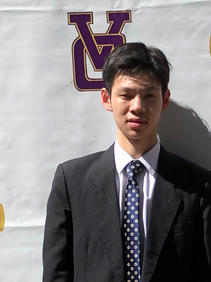
Our Team
UBC Orbit prides itself in providing a safe learning environment for members of all disciplines and technical backgrounds to gain hands-on experience in the development of a satellite for harsh space environments. Our team represents the forefront of highly capable like-minded students willing to go above and beyond in the name of innovation.
Advisors
The development of a satellite requires a highly cohesive team and a lot of planning and resources. To aid in making critical decisions and give invaluable advice on design issues, UBC Orbit is grateful to have the following advisors.
Julian Mentasti
BSc
Software Engineer, Google
Dylan Gunn
BASc, P.Eng.
Director, UBC Engineering Physics Project Lab
Andrew Danyliuk
BASc
Engineering Physics
Leadership
Rodrigo Barbosa
Co-Captain
Comms Lead
BASc Undergraduate
Electrical Engineering
Charles Lee
Co-Captain
ADCS Co-Lead
BASc Undergraduate
Engineering Physics
Jen Jon Ma
Co-Captain
EPS Lead
BASc Undergraduate
Materials Engineering

ADMIN
The Administration Team is responsible for all non-technical management tasks. The team maintains UBC Orbit’s public image, relationships, and finances. This includes searching for sponsorships, applying for funding, booking educational and industry outreach events, and managing all our social media platforms.
The ADCS team is in charge of determining and stabilizing the orientation of the satellite. The positioning of the satellite is determined using a variety of sensors, such as sun sensors and an inertial management unit(IMU). The gathered data is then fed into a custom control system which controls the satellite's actuators such as magnetorquers and reaction wheels.

ADCS
ATTITUDE DETERMINATION AND CONTROL

CDH
COMMAND AND DATA HANDLING
The CDH sub-system is essentially the brain of the satellite; it deals with carrying out commands from ground stations, compiling satellite-wide data, and monitoring/responding to any system failures. For ALEASAT, CDH developed an on-board computer system tolerant to radiation faults using a single chip (TMS570) running a real-time operating system (FreeRTOS). Implementing the concept of a state machine, ALEASAT is capable of recognizing states, like tumbling, to ensure maximum availability and reliability.
The Communications team designs the interface between the satellite and ground station. This requires dealing with advanced hardware structures, understanding constraints of radio communication, and deciding how data should be formatted to be received and transmitted by the satellite. All radio communication from the satellite utilize a programmable transceiver allowing for greater design flexibility. Additionally, the satellite will be operational by any amateur satellite station.

COMMS
COMMUNICATIONS

EPS
ELECTRICAL POWER SYSTEMS
The EPS team is responsible for maintaining the battery and solar panels of the satellite, ensuring they are functioning as intended, and developing a power budget to ensure that there is always ample power to perform any required operation. To do so, the team must understand the power consumption of each subsystem, as well as simulate the satellite's orbit to factor in the power intake provided by solar panels. This information is used to determine the state of charge of the batteries at each point in time.
The hardware subteam is responsible for executing the main mission of the satellite and designing our on board computer (OBC). For ALEASAT, our payload consists of a camera module that will be able to take images of a specifically requested location on Earth and immediately downlink them. The payload module consists of an image sensor PCB, lens and filter assembly, and a micro-controller for processing the sensor output and communicating with the other subsystems.

HARDWARE

STRUCTURE
The structure team is in charge of designing, manufacturing and assembling the frame and mechanical components of the satellite. The team also uses simulations to ensure the designs pass the necessary stress and thermal tests. The structure for the satellite is a standard 3U aluminum CubeSat frame, while ALEASAT uses a custom-designed 1U frame support the satellite's subsystems.

MOPS
The MOPS team creates ALEAs flight simulations allowing us to predict the path of the satalite in order to communicate at the correct time











































